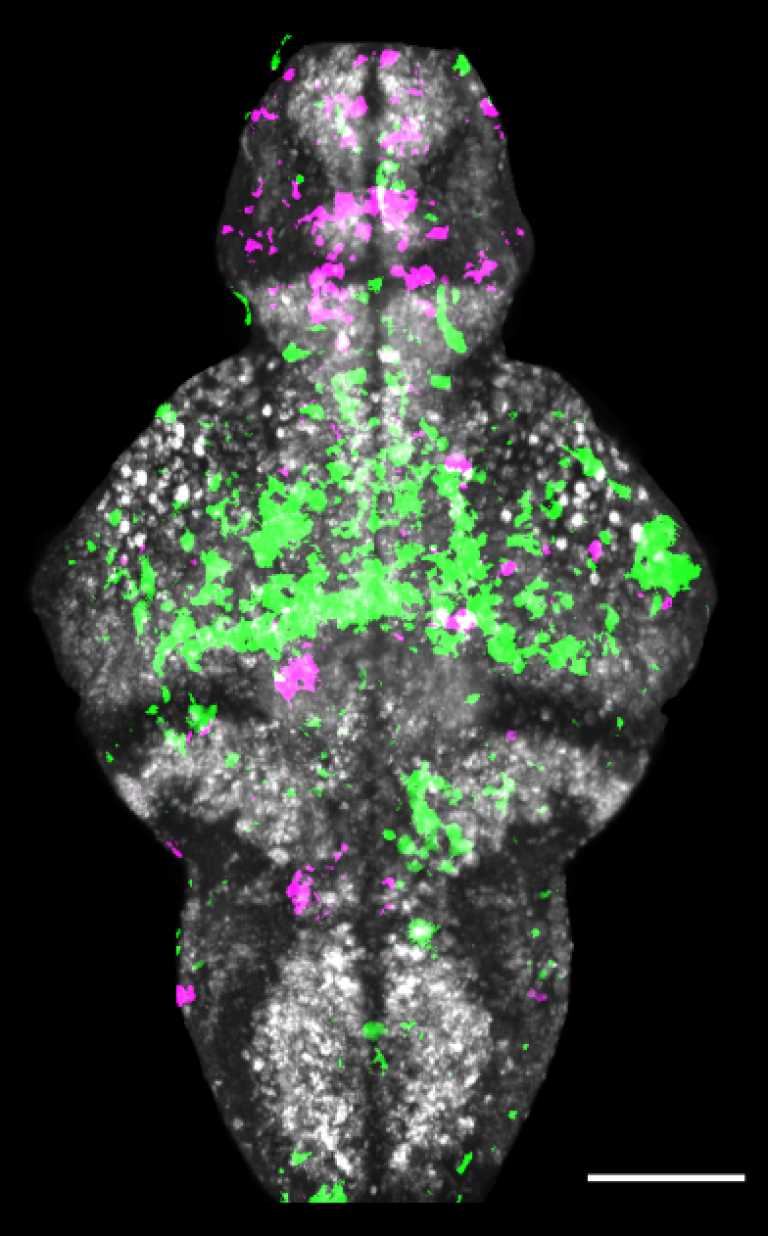Zebrafish to help us understand a disabling childhood disorder
9 June 2022
Dysregulation of the metal manganese in the brain underlies movement abnormalities in a rare inherited disorder leading to disability in childhood, according to a paper in the journal Disease Models and Mechanisms.

Manganese is an essential trace metal present in our diet that is required for normal brain function. However, excess manganese is toxic to the brain, particularly to regions required for movement control. Therefore, it is crucial that the body tightly regulates manganese levels.
Lead author Dr Tuschl, MRC Clinician Scientist at the Genetics and Genomic Medicine Department at UCL Great Ormond Street Institute of Child Health (GOS ICH) in collaboration with other UCL groups has recently identified an inherited disorder caused by abnormalities in the gene SLC39A14 that is required for manganese transport across the cell. Impaired control of the body's manganese load results in manganese accumulation in the brain. Affected children suffer from a disabling movement disorder and often become wheelchair bound within the first years of life. Current treatment options are limited and burdensome. Therefore, there is a real need to better understand the disease mechanisms in order to identify new treatment targets and strategies.
Using a zebrafish model of this manganese transport disorder this study has identified how manganese regulation is impaired in the brain leading to both toxic effects of manganese as well as manganese deficiency. Subsequently, this impacts on the regulation of calcium that is required for normal neuronal function. These changes are associated with impaired neuronal activity in the brain of zebrafish and reduced swimming behaviour.
This work has suggested several downstream effects of manganese toxicity that highlight cellular stress as a key event. These results provide a crucial starting point from which to investigate disease mechanisms further with the view to identifying new treatments for manganese associated disorders and ultimately improve patient’s quality of life.
Dr Karin Tuschl (UCL Great Ormond Street Institute of Child Health), lead PI said
“This is an important study that brings us closer to understand the disease mechanism of this rare disorder. This is a crucial step in order to find new treatments for affected children.”
Links
- Paper in Disease Models and Mechanisms
- Tuschl Lab
- Dr Karin Tuschl research profile
- Inborn Erros of Metabolism Section, Genetics and Genomic Medicine Department at UCL Great Ormond Street Institute if Child Health
- Animal Research at UCL
Image
Zebrafish brain showing changes in neuronal activity: diminished activity in green, increased activity in magenta, scale bar 100µm (Credit: Chintan Trivedi)
 Close
Close


